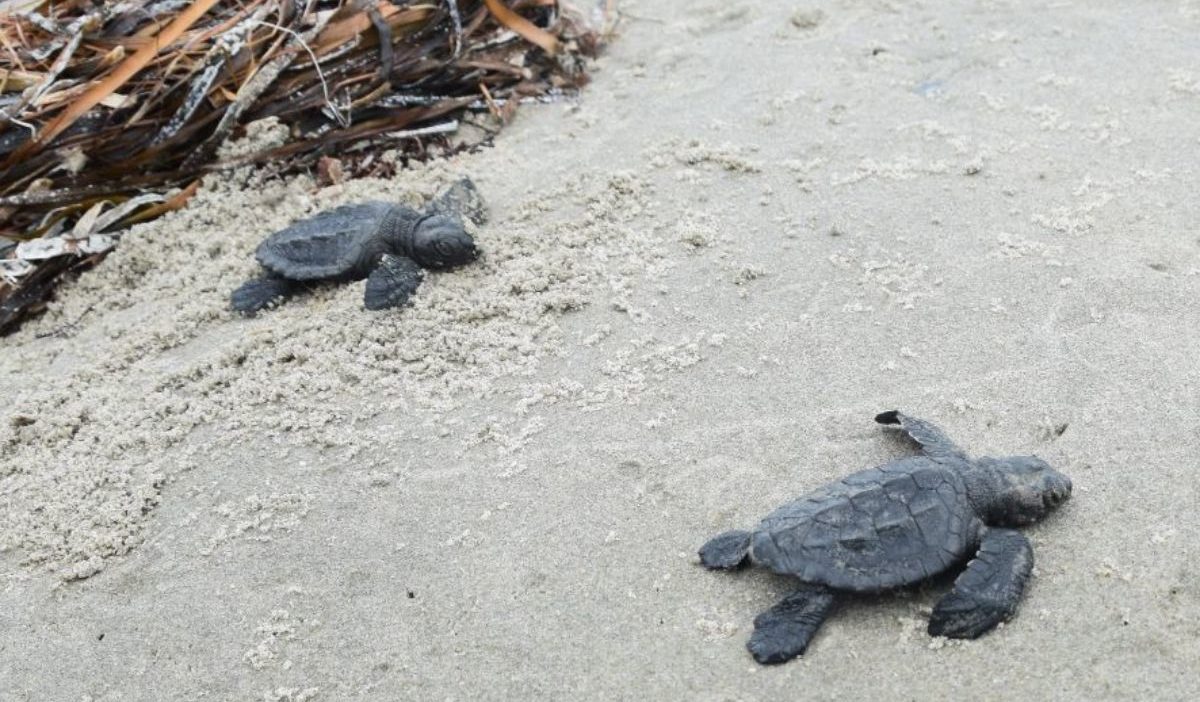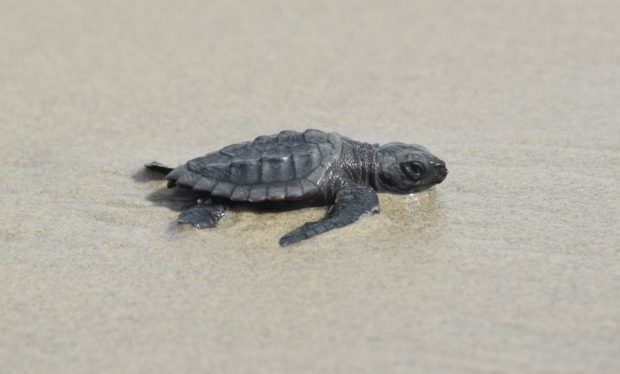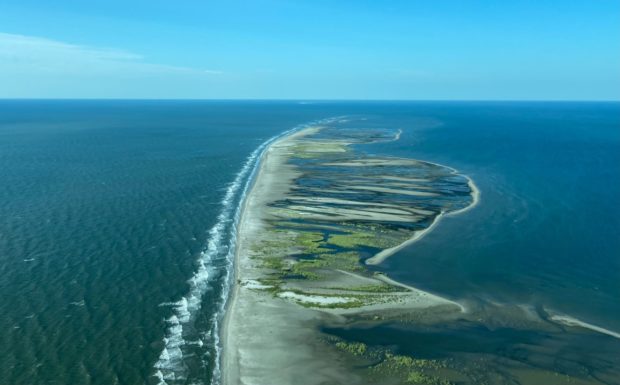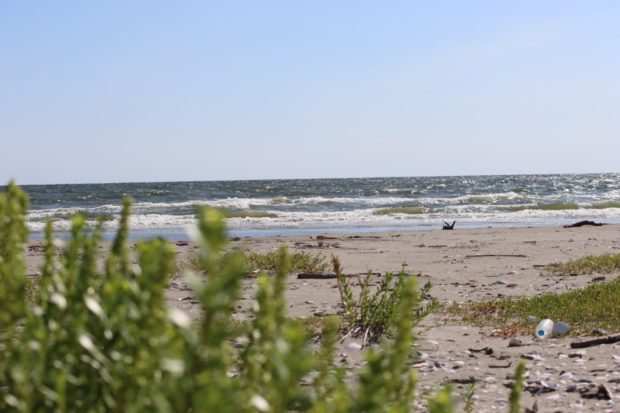We have much more to do and your continued support is needed now more than ever.
Sea Turtles Return! Restoring Habitat in the Gulf
Louisiana, Florida projects creating better future for sea turtles

On a stretch of sandy beach off of Louisiana’s coast, something remarkable has happened – the sea turtles are back! For the first time in 75 years, sea turtle nests and hatchlings have been seen on Louisiana’s Chandeleur Islands in the Breton National Wildlife Refuge.
The hatchlings on these barrier islands were Kemp’s ridley turtles, the world’s smallest sea turtle, which is also an endangered species. Kemp’s ridleys nest almost exclusively along beaches in the Gulf of Mexico, but no nests have been documented on the Chandeleur Islands since 1947. Our NWF Gulf restoration team knew that restoring and protecting these wild places is important so that someday the sea turtles could return. And now it seems that they are!

The Gulf of Mexico provides habitat for five species of sea turtles – Kemp’s ridley, loggerhead, hawksbill, leatherback and green turtle – and all are listed as either threatened or endangered under the Endangered Species Act. One of the biggest threats to these turtles is loss and degradation of their nesting habitat. NWF is working in the Gulf to restore and improve nesting habitat for sea turtles by advancing large-scale coastal habitat restoration; working with communities to update their lighting ordinances to minimize impact on nesting turtles; and advocating for clean energy and nature-based solutions to address sea level rise.
Coastal Habitat Restoration
The uninhabited Chandeleur and Breton Islands make up Breton National Wildlife Refuge. This refuge is the nation’s second oldest refuge, established in 1904 by President Theodore Roosevelt, and is the only National Wildlife Refuge he ever visited. The refuge provides critical habitat to wading birds and seabirds, wintering habitat for shorebirds and waterfowl, and now nesting habitat for sea turtles.
Over the years, the islands of the Breton Island National Wildlife Refuge have been impacted by erosion, sea level rise, and storm events reduced the islands to merely razor thin slivers of land surrounded by water. To make matters worse, in 2010 shortly after the Deepwater Horizon exploded, oil began washing up on the islands. Planning is currently underway, using settlement funds from the oil spill, to restore the Chandeleur Islands.

A project was recently completed on North Breton Island to restore 400 acres of beach habitat. It was these newly restored beaches that provided the necessary habitat for the Kemp’s ridley nest. Guy McInnis, parish president of St. Bernard Parish, where the islands are located, agrees: “We are excited about the discovery of Kemp’s ridley turtles on the Chandeleur Islands. This is just another reason why we should preserve, protect and restore this critical habitat.”
Sea Level Rise Adaptation
Gulf coast beaches that sea turtles rely on are at risk from climate change impacts like sea level rise and increased storm events. The National Wildlife Federation advocates for nature-based approaches to shoreline protection and works to reduce drivers of climate change by supporting clean energy sources.

By reducing barriers to using nature-based solutions like natural beaches and dunes – instead of shoreline-armoring like seawalls and bulkheads – we are working to ensure that even with rising seas, sea turtles have a place to nest. Our work to transition to clean energy and reduce the overall drivers for climate change complements these efforts.
Lighting Ordinance Updates
Artificial lighting not only changes the darkness of our night skies but also impacts our wildlife – including both nesting female and baby sea turtles. Artificial lights disrupt the natural cues used by turtles as they journey from the beach to the sea. Light pollution can cause nesting moms to have “false crawls” where they emerge to lay their eggs, but discouraged by the lights, they return to the ocean before doing so. (Watch our Facebook Live here where Georgia Biologist Mark Dodd, follows a false crawl).
For both nesting females and hatchlings, light pollution can cause disorientations where sea turtles head in the wrong direction, and may cross streets or get stuck in human-made structures often resulting in death. In Florida, the National Wildlife Federation is working alongside our partners at the Sea Turtle Conservancy to help coastal communities update their lighting ordinances with best practices and recent technology to create a night sky that turtles can thrive under.
Protecting In-Water Habitat
In addition to ensuring nesting habitat is available and sufficiently dark, sea turtles also need places to feed and mate and grow – places like the Florida Keys National Marine Sanctuary (FKNMS) are a national treasure and provide important habitat for a whole host of marine life, including sea turtles. The FKNMS is currently considering additional protections and NWF is urging the sanctuary to include a globally-significant sea turtle forage area 20 miles from Key West, called Marquesas Keys Turtle Wildlife Management Area.
A Brighter (and Darker) Future for Sea Turtles
With the creation and protection of sea turtle nesting and foraging habitat, NWF is encouraged for a brighter future for sea turtles, including darker beaches.
. . .
Our thoughts are with everyone along the Florida Gulf Coast who are experiencing Hurricane Ian storm impacts.
This blog was written in part by our Gulf Program expert on marine mammals and sea turtles, Jessica Bibza, who passed away this past weekend. We are completely heartbroken. We have fun memories of pulling this blog together with her and dedicate it to Jessica.





















